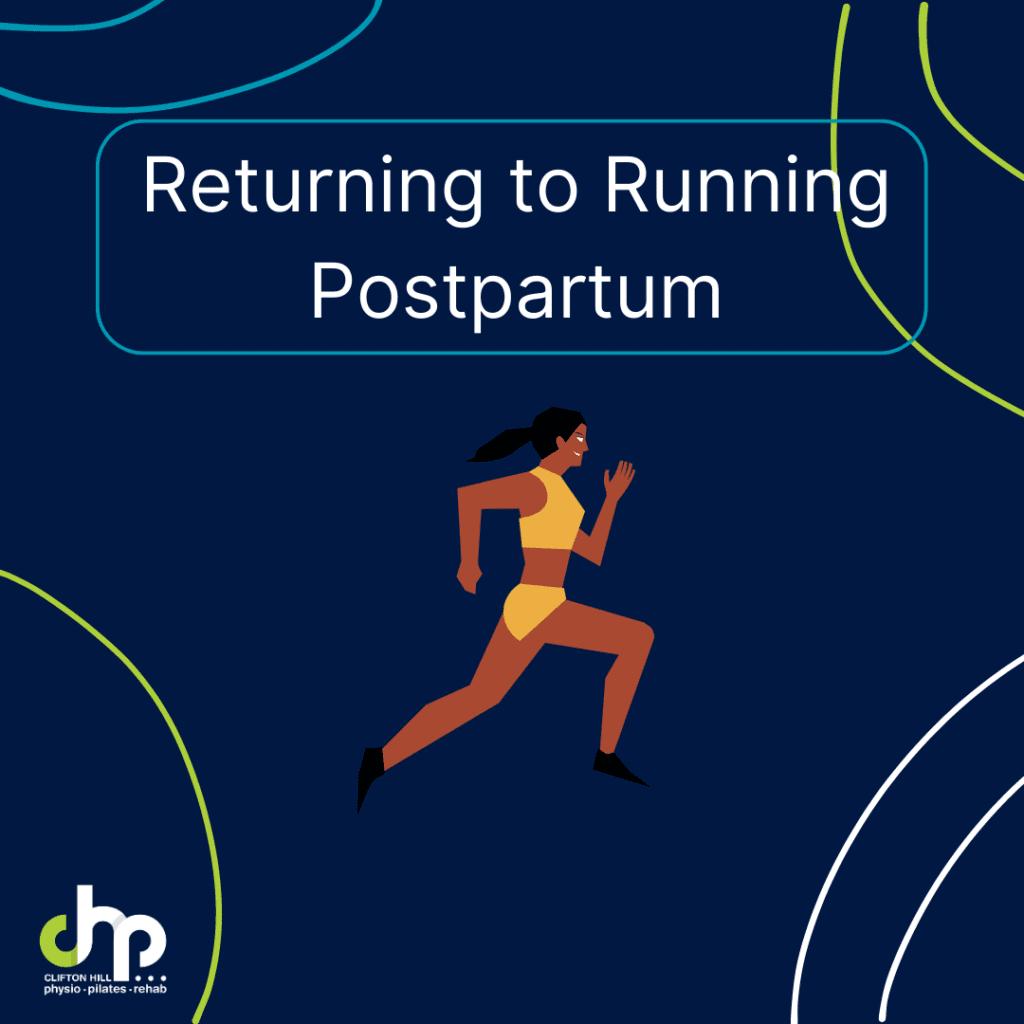
Returning to Running Postpartum
Returning to Running Postpartum https://www.cliftonhillphysiotherapy.com.au/wp-content/uploads/2023/05/Copy-of-Celebrating-1024x1024.png 1024 1024 Sallie Cowan Sallie Cowan https://secure.gravatar.com/avatar/7f5ef92e4282b4538250cbe3e76fe2e1?s=96&d=mm&r=g- Sallie Cowan
- no comments
Chantelle (pictured above) is one of our fabulous Pelvic Health physiotherapists at Clifton Hill Physiotherapy. She’s really passionate about supporting patients with strengthening their pelvic floor, managing incontinence and pelvic girdle pain, and managing the pelvic floor during the perinatal period. See below blog post for quick notes from Chantelle about a postpartum return to running, and don’t hesitate to reach out for a consultation about your perinatal journey.
Pregnancy and birth are huge feats for the pelvic floor to overcome, and they do cause some unavoidable trauma to the perineal region and pelvic floor muscles. It is important to allow the pelvic floor to recover after birth before putting any additional strain on it, which may lead to complications (such as urinary incontinence).
While running is a great form of physical activity, it puts a massive load on the pelvic floor! We need to make sure that your pelvic floor has enough strength and endurance to cope with the loads of running, especially when it has been weakened after pregnancy and birth. Therefore, we use the following guidelines to ensure you have a well-functioning pelvic floor before it is exposed to additional loads:
– Minimum 3 months postpartum
– Absence of pelvic floor symptoms – incontinence, urgency, heaviness/dragging/pressure/bulge, lower back or pelvic pain
– Good pelvic floor strength and function as assessed by your women’s health physio
– Able to maintain pelvic floor function during tasks such as: walking, single-leg balance, jogging on the spot and hopping.
– Good function in other major muscle groups required for running including glutes, quads, calves and hamstrings.
We strongly recommend you see a Women’s health physio before returning to running – they will assess your pelvic floor, looking at its strength, endurance and coordination, as well as check for any symptoms or issues during high-impact tasks, to ensure it is ready for you to return to running!
Goom, T., Donnelly, G., & Brockwell, E. (2019). Returning to running postnatal–guidelines for medical, health and fitness professionals managing this population. Absolute Physio.
- Posted In:
- General

